| By: Paul S. Cilwa | Viewed: 5/3/2024 Occurred: 3/1/2009 |
Page Views: 1275 | |
| Topics: #Camping #Haleakala #Hawaii #Kipahulu #Maui #Photography #Places | |||
| Continuing my journey around Maui's eastern half. | |||
The beautiful area now known as the Hana Coast was, prior to infection by the European visitors, heavily populated. French Navy officer La Pérouse, while sailing by the Maui coast in 1786, remarked
I coasted along its shore at a distance of a league [three miles] …. We beheld water falling in cascades …. The inhabitants, which are so numerous that a space of 3-4 leagues may be taken for a single village. The huts are on the coast so that the habitable part of the island is less than one half of a league. After passing Kaupō no more waterfalls are seen, and villages are fewer.
The Hawaiian word for a cluster of extended families is ʻohana. I assume that the name of the town in this area, Hana, is derived from that.
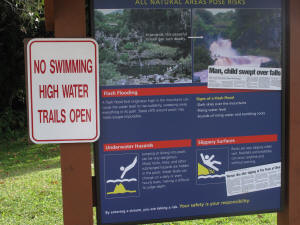
As I had camped at the Haleakala National Park's Kipahulu campground on the Hana Coast, I of course had to visit the Seven Sacred Pools which is part of the park. There are, in fact, many more than seven pools; there are dozens of various sizes and in the summer are popular swimming spots. Because of the storm still raging atop the volcano, however, there was flash flood danger and so the pools were closed to swimmers. The trails leading to them were open, however, to photographers and non-swimming hikers.
The hike to the stream that supplies the pool is very pleasant, much more a nature walk than a hike. I'm not sure it's navigable in a wheelchair, but pretty much anyone not in a wheelchair should be able to make it. There are even benches to accommodate those who need a rest or simply wish to meditate in the peaceful surroundings.
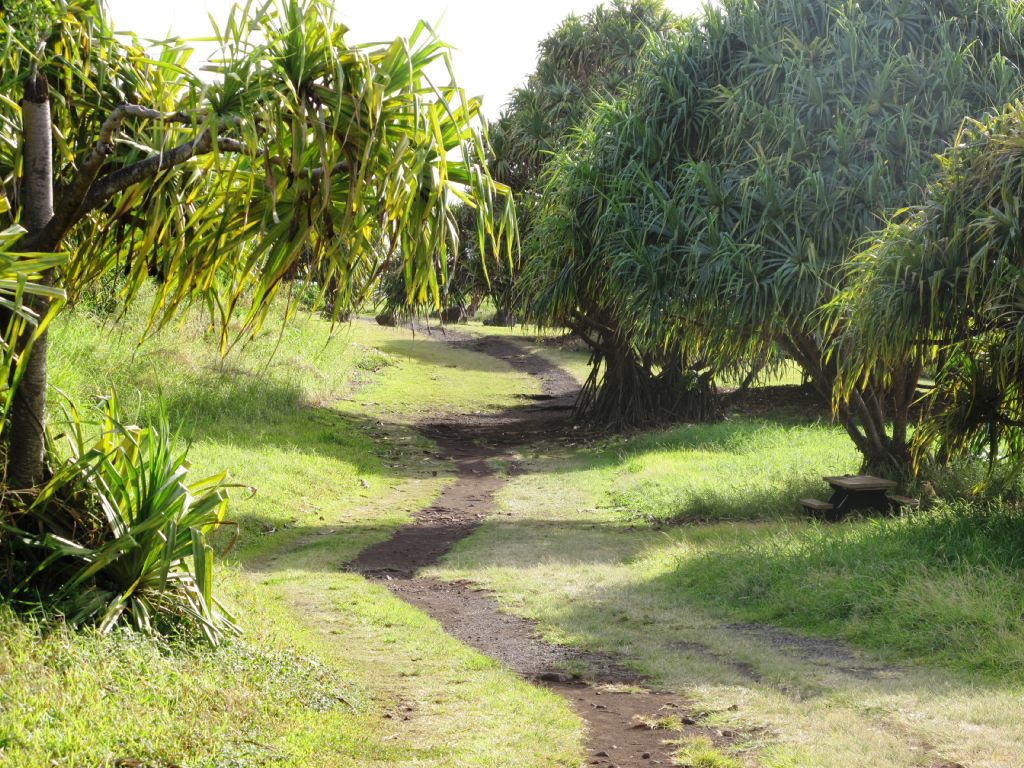
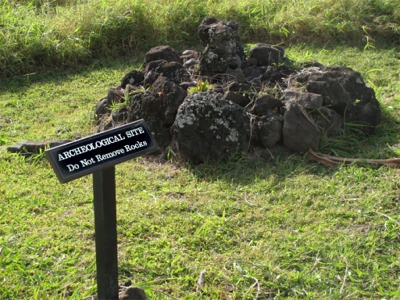
The area is littered with archaeological remains of the families that used to farm this area. The remains aren't much to speak of, mostly piles of rocks. But they do serve as a reminder that before this was a national park, it was home to the ancestors of today's Hawaiians.
And, of course, since the path runs for a stretch along the shore before turning toward Haleakala, there are stunning ocean views whenever one wants to see one. In the shot below is a small black sand beach. This sand is formed by waves pounding pieces of lava against each other. Such beaches erode relatively quickly (hundreds of years versus thousands) as the amount of loose lava is used up.
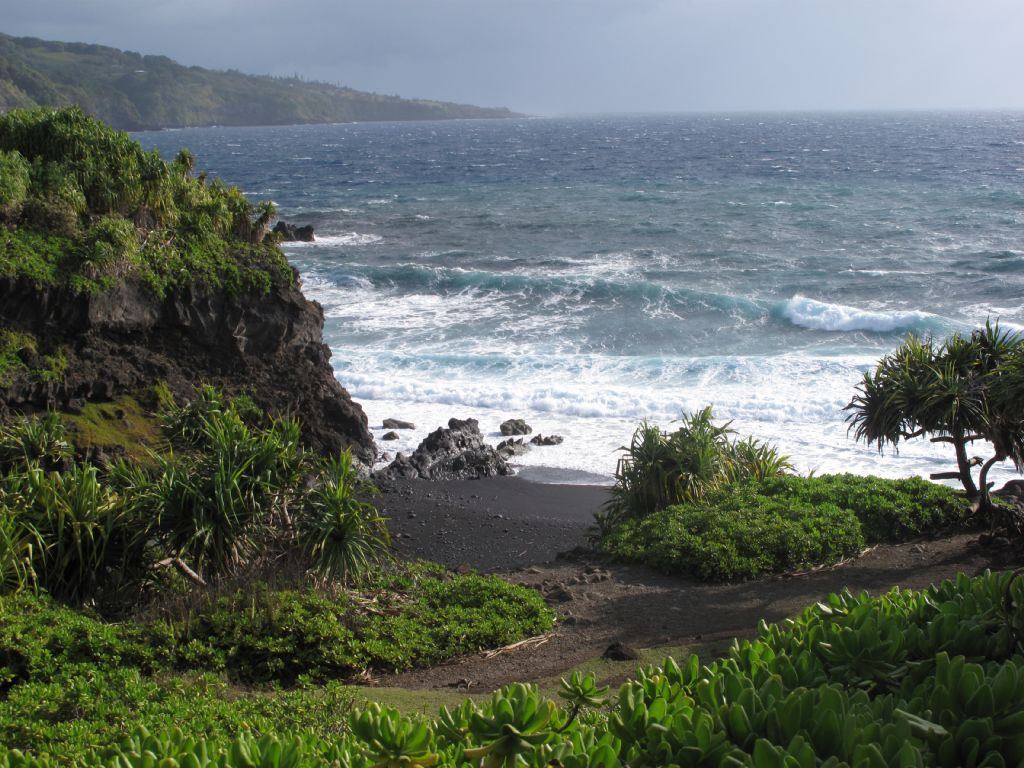
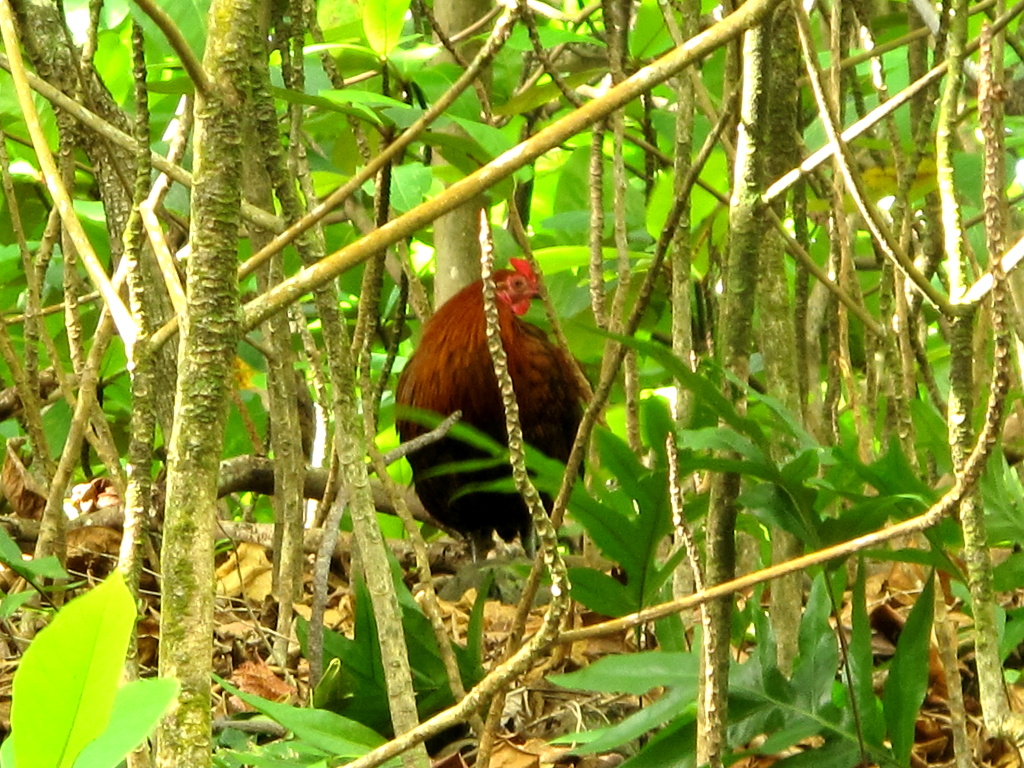
The jungle enclosed me and I enjoyed the songs of native birds, but also a familiar call: An insistent cock-a-doodle-doo! that was coming from somewhere. I knew the original Polynesian colonists had brought chickens, and well as boar, with them; and here was a free-living descendent. I stood still and listened, and soon was rewarded with a view of one of the few kinds of birds I can actually recognize!
As I continued up the path toward the second-largest waterfall on it, Makahiku, I continued to snap photos of each cascade and pool as I came to it. I so want to go back and spend a day swimming here!
Please allow time for the photos to load. And if you'd like to make any of them your desktop wallpaper, feel free to right-click and select "Set As Background" (or equivalent, depending on your browser).
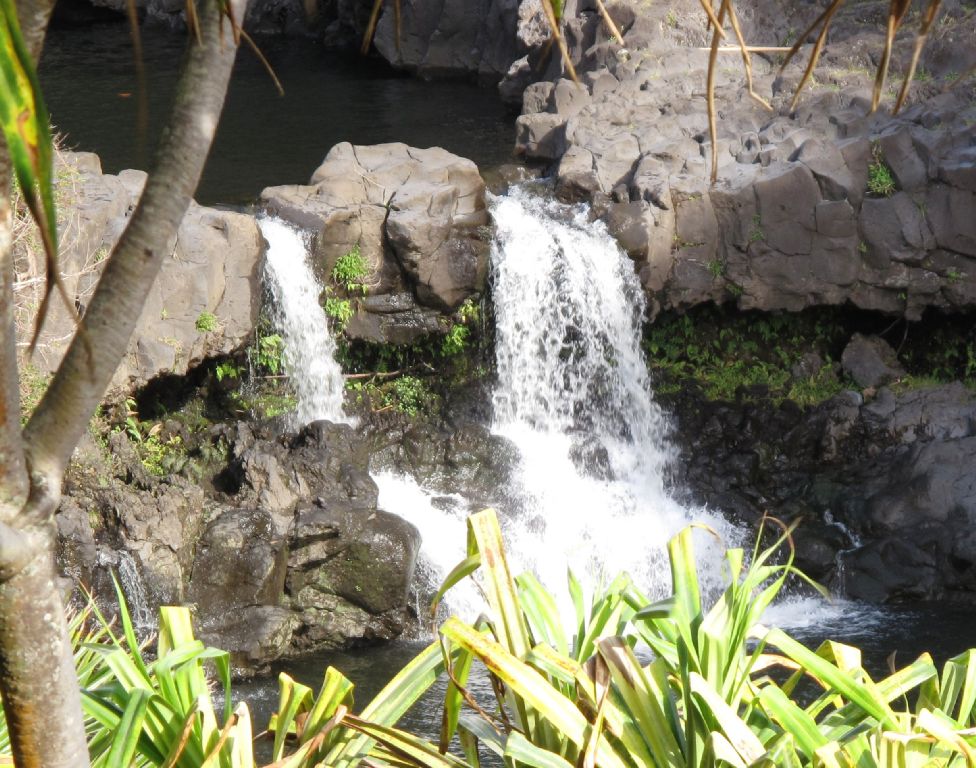
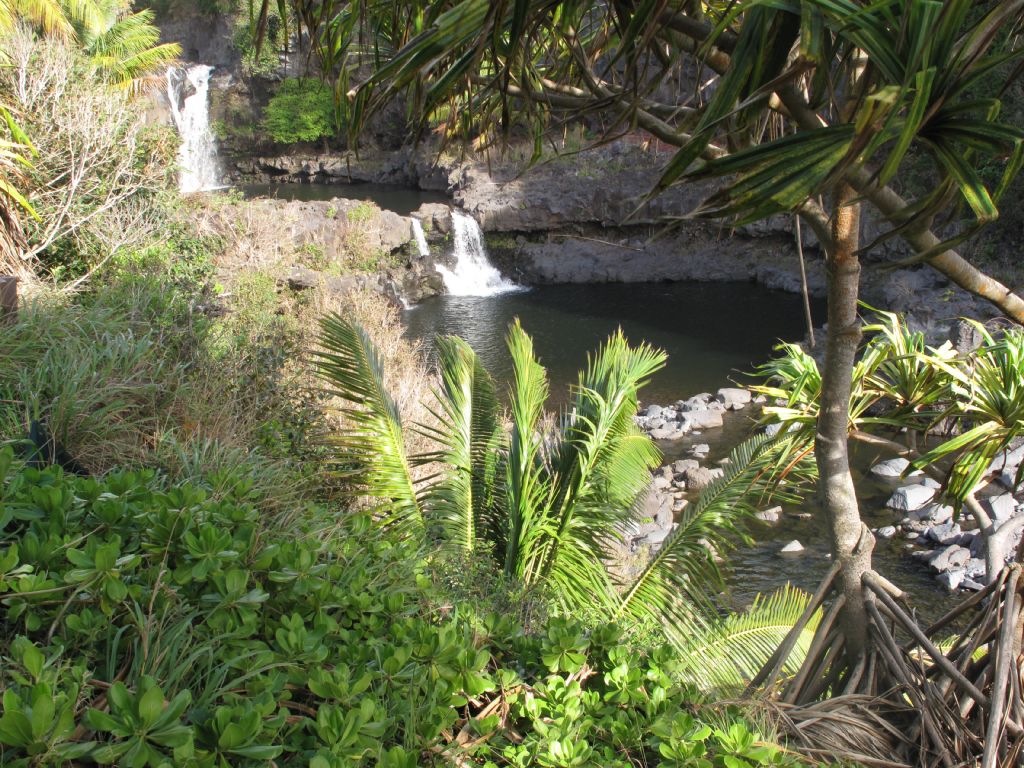
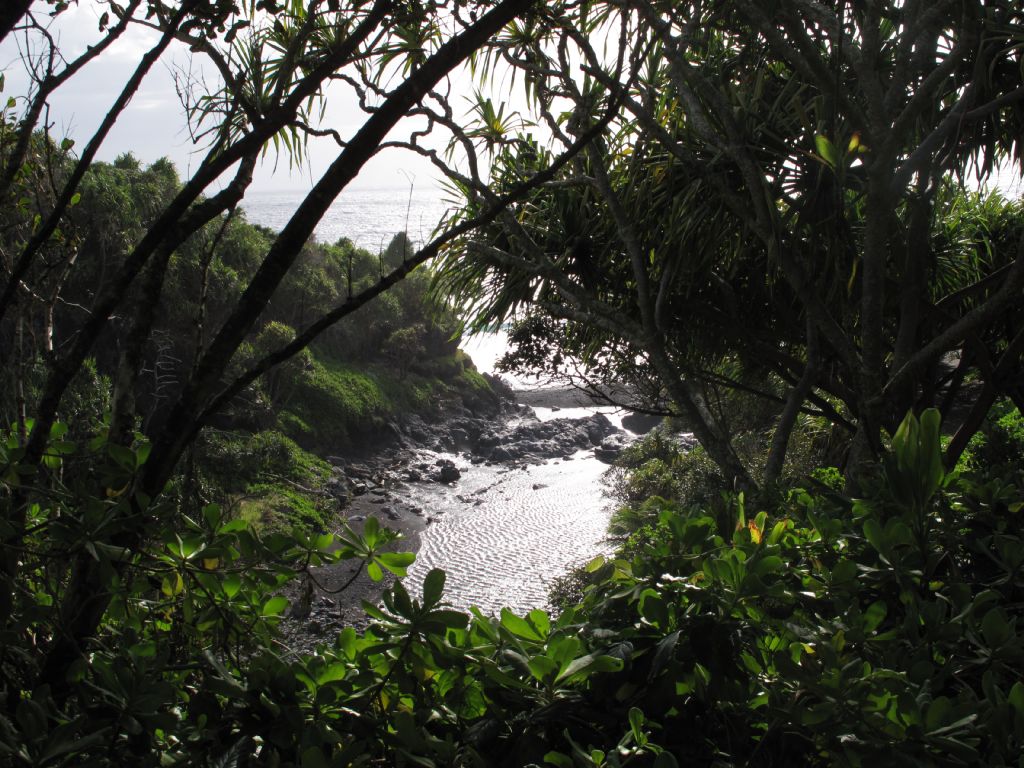
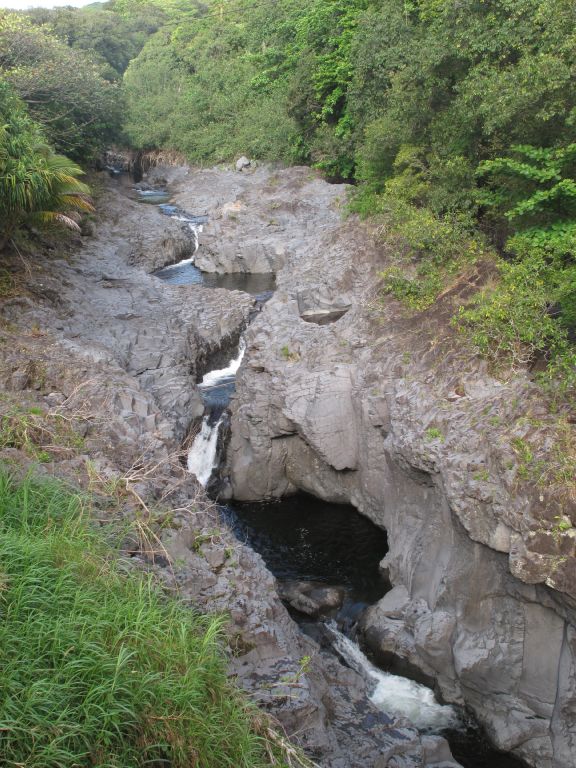
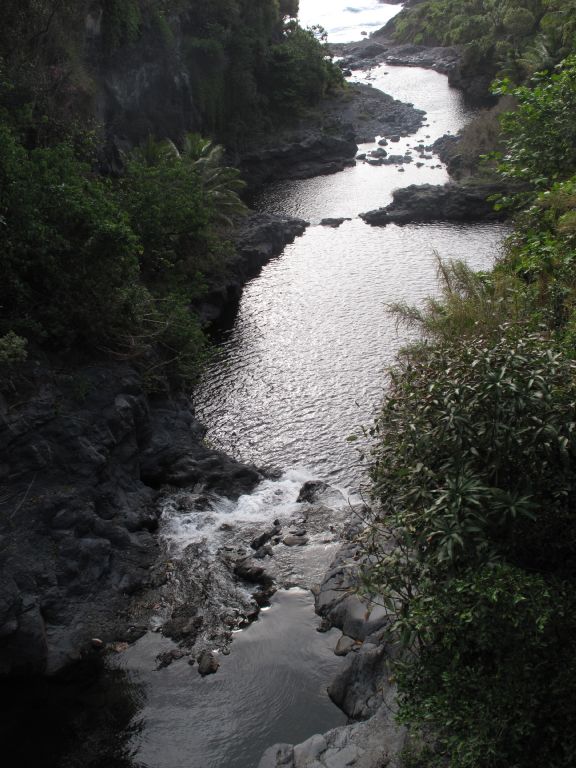

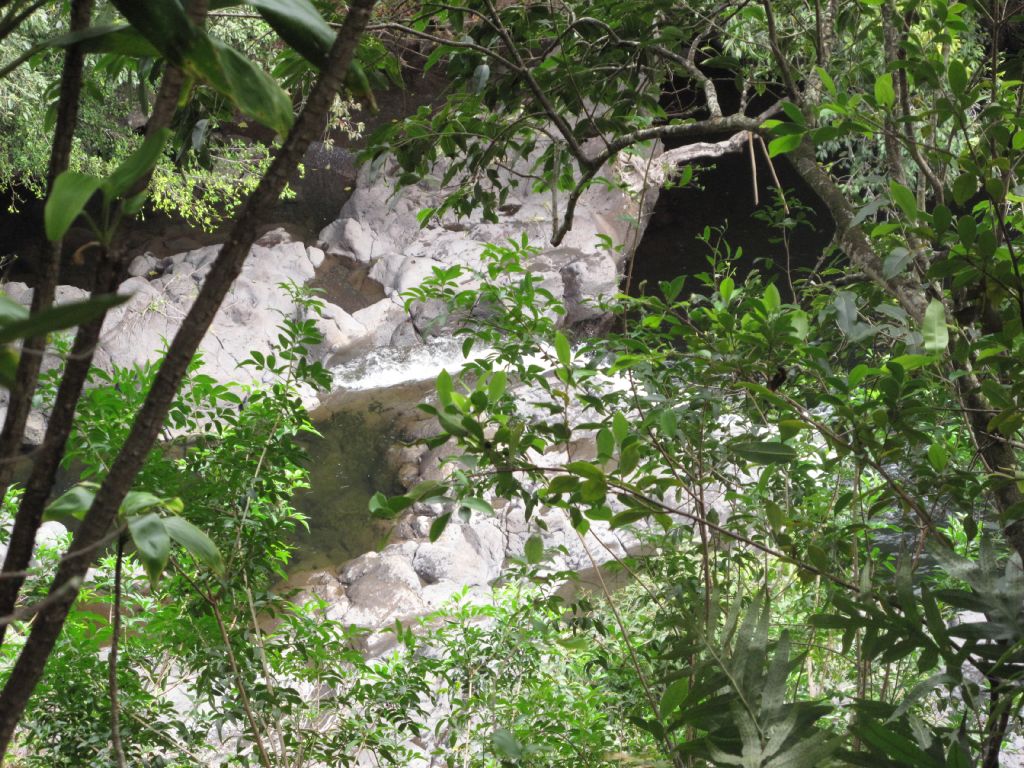
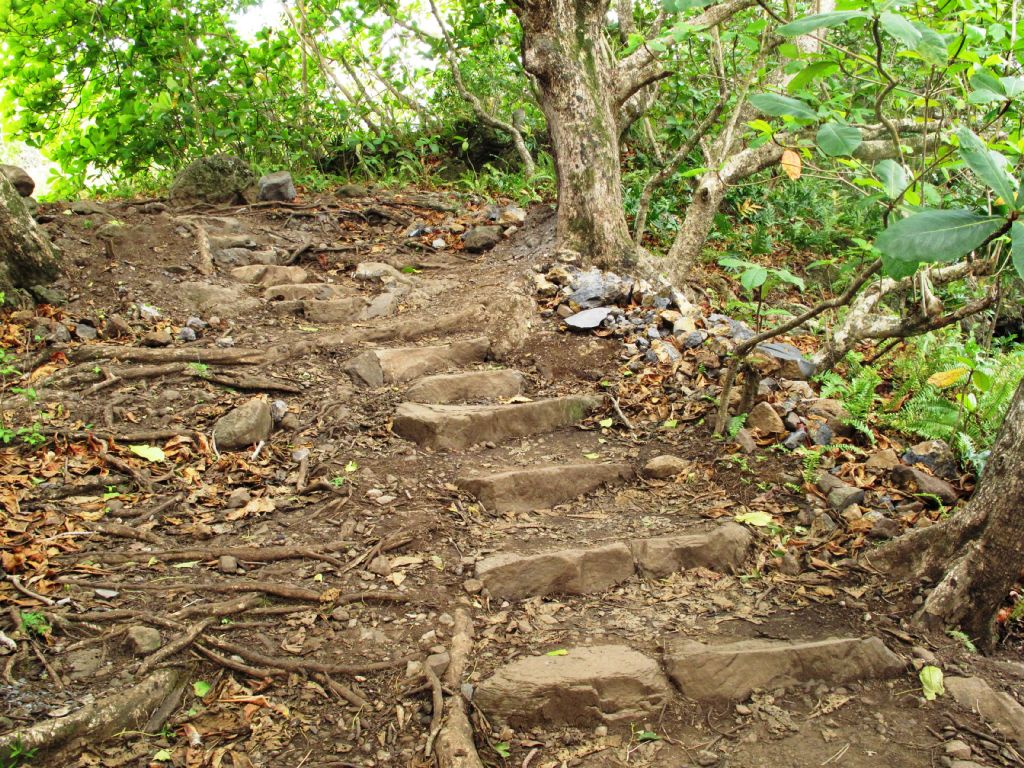
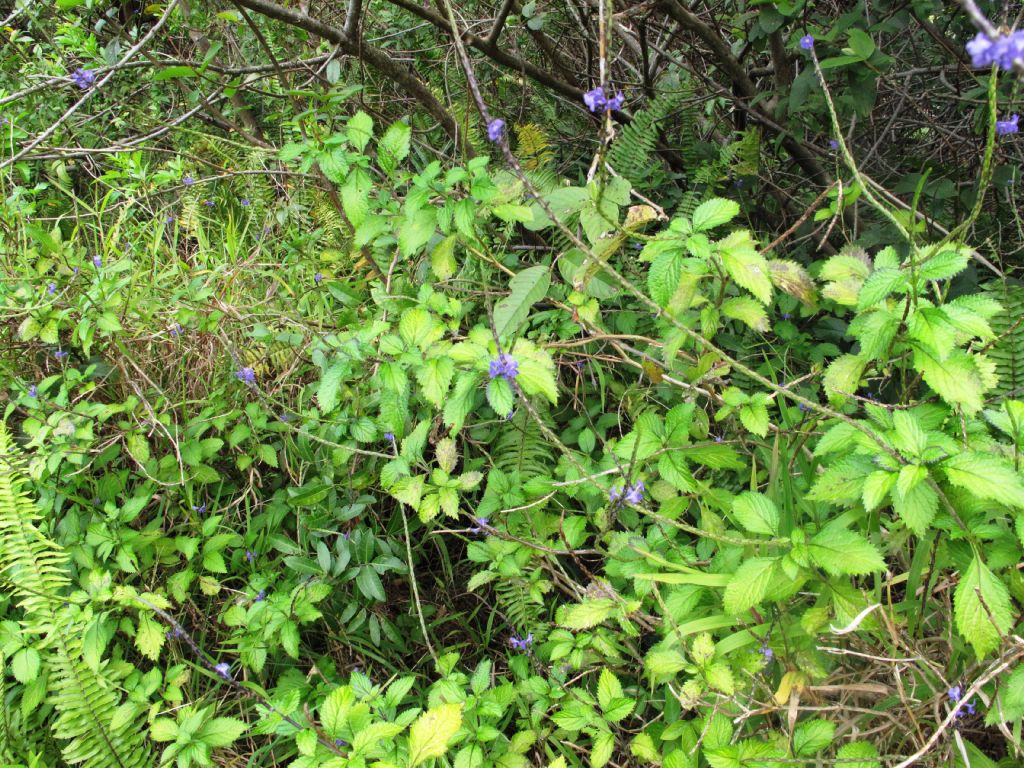
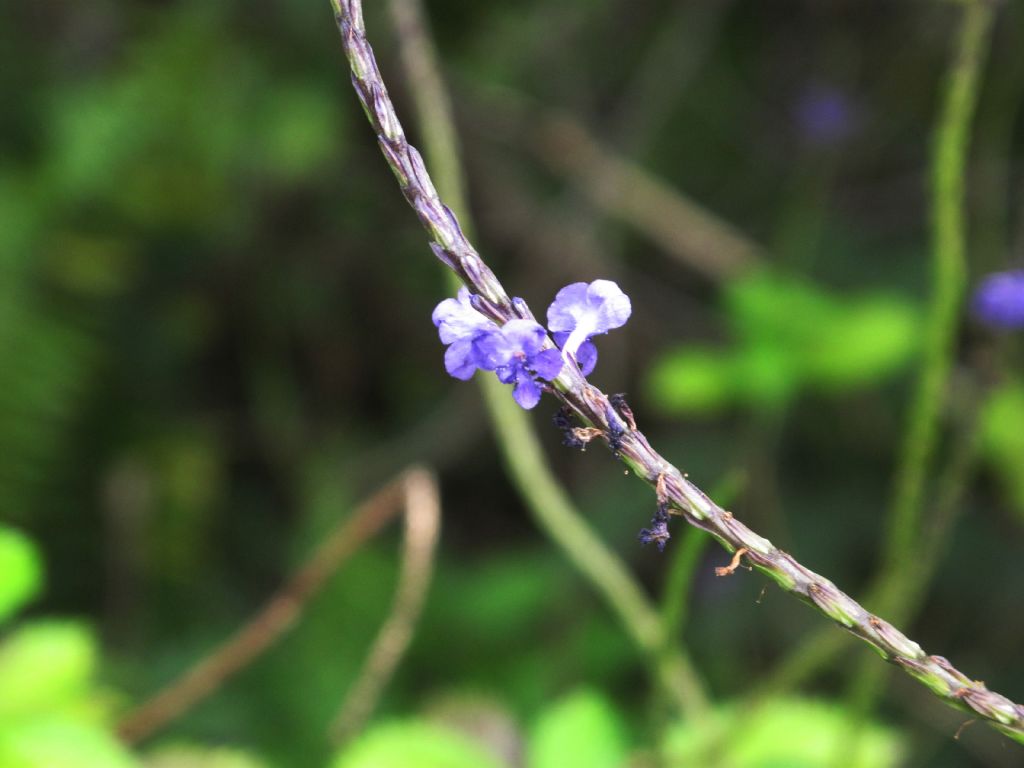
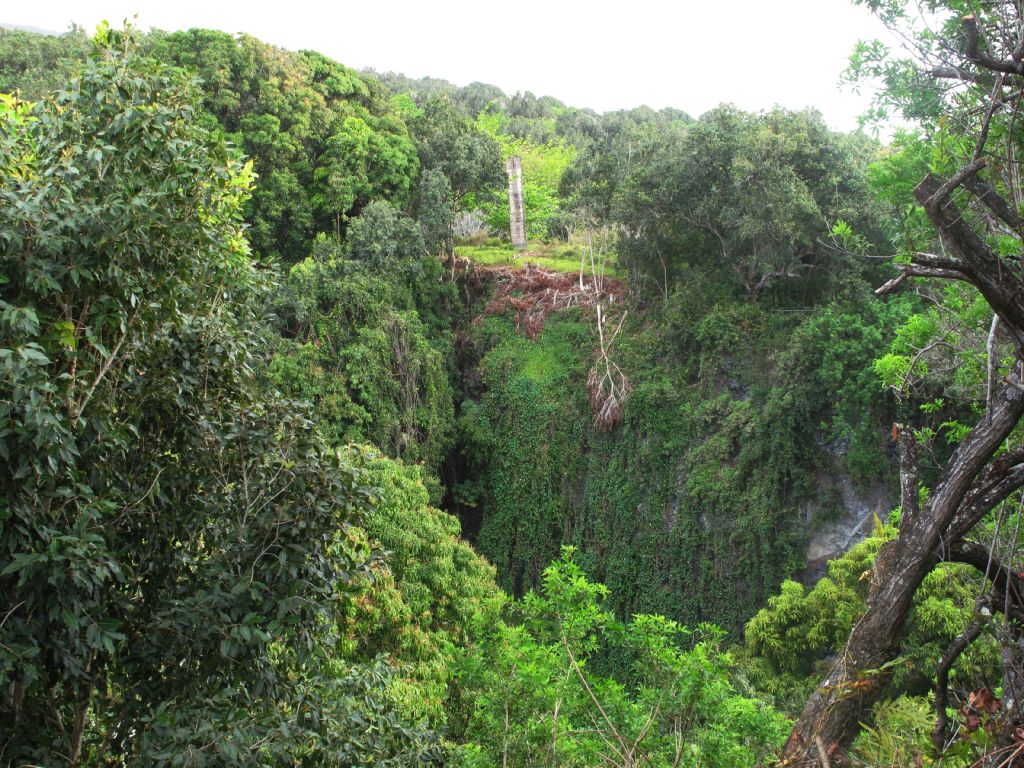
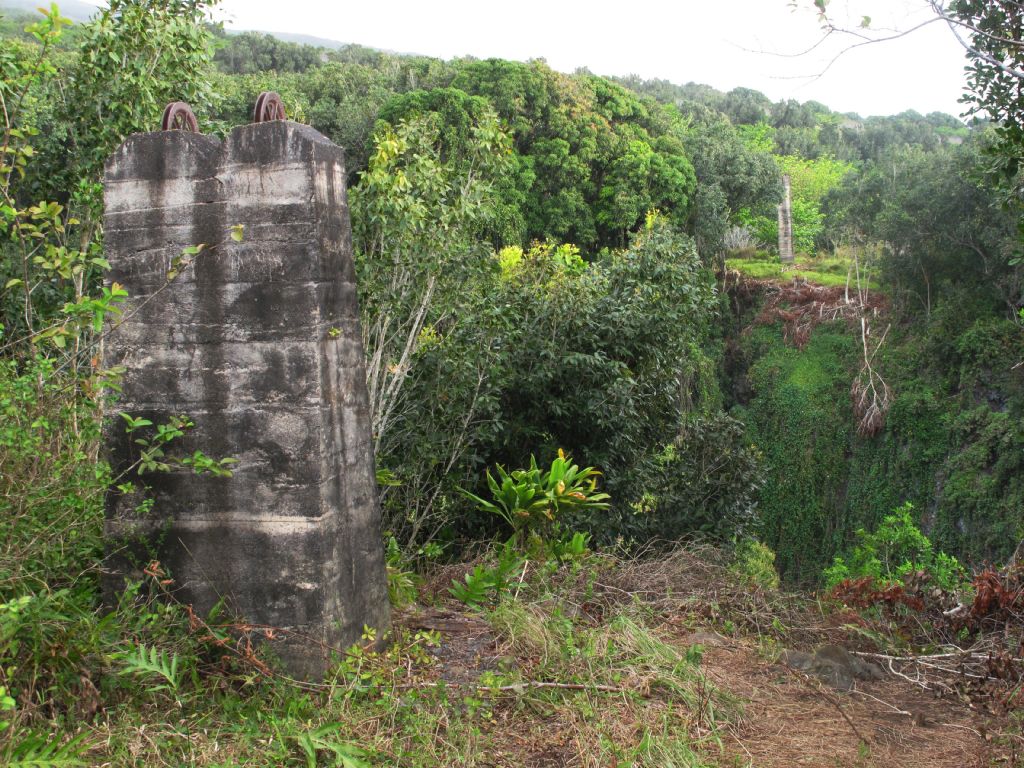
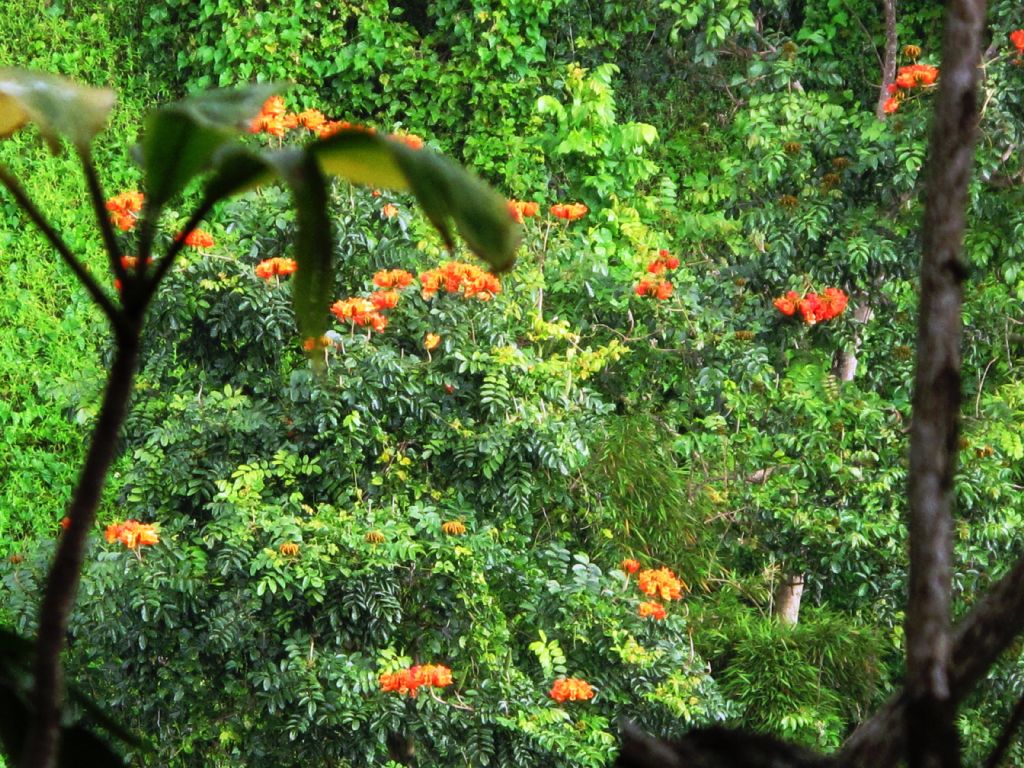
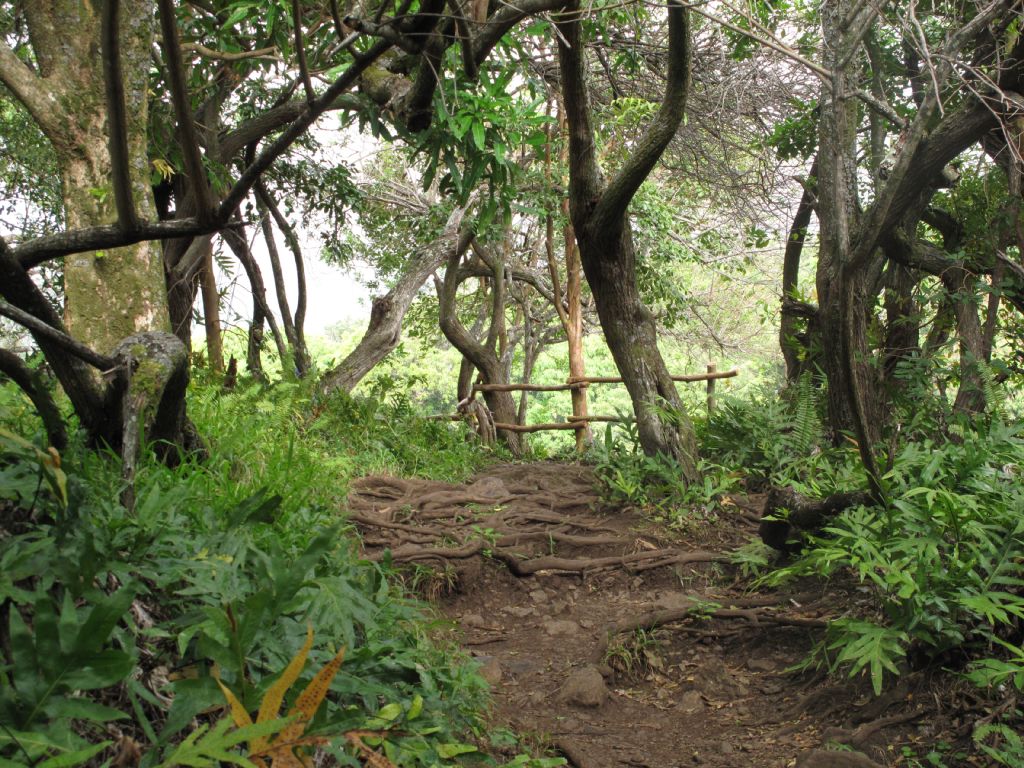
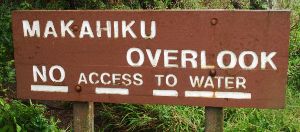
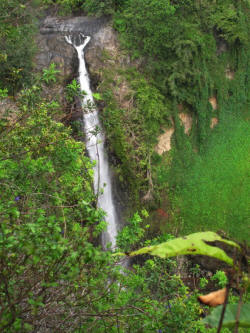
Makahiku Falls consists of a 187-foot drop. There is an even taller waterfall, a full 400-footer, about an hour further up the trail; I decided to save it for my next trip.
One of the things that most impressed me about this spot, was the view of the slope of Haleakala. I was in a tropic rainforest; but just a little ways up was a temperate clime currently being enjoyed by grazing cattle. And above them, was the frigid sub-alpine zone, with an almost barren alpine zone above that. Within a few miles of horizontal space, you have represented every climate short of arctic!!
As Mark Twain put it, describing another 10,000 foot high Hawaiian peak, Hualailai,
The rays of glittering snow and ice, that clasped its summit like a claw, looked refreshing when viewed from the blistering climate we were in. One could stand on that mountain (wrapped up in blankets and furs to keep warm), and while he nibbled a snowball or an icicle to quench his thirst he could look down the long sweep of its sides and see spots where plants are growing that grow only where the bitter cold of Winter prevails; lower down he could see sections devoted to production that thrive in the temperate zone alone; and at the bottom of the mountain he could see the home of the tufted cocoa-palms and other species of vegetation that grow only in the sultry atmosphere of eternal Summer. He could see all the climes of the world at a single glance of the eye, and that glance would only pass over a distance of four or five miles as the bird flies!
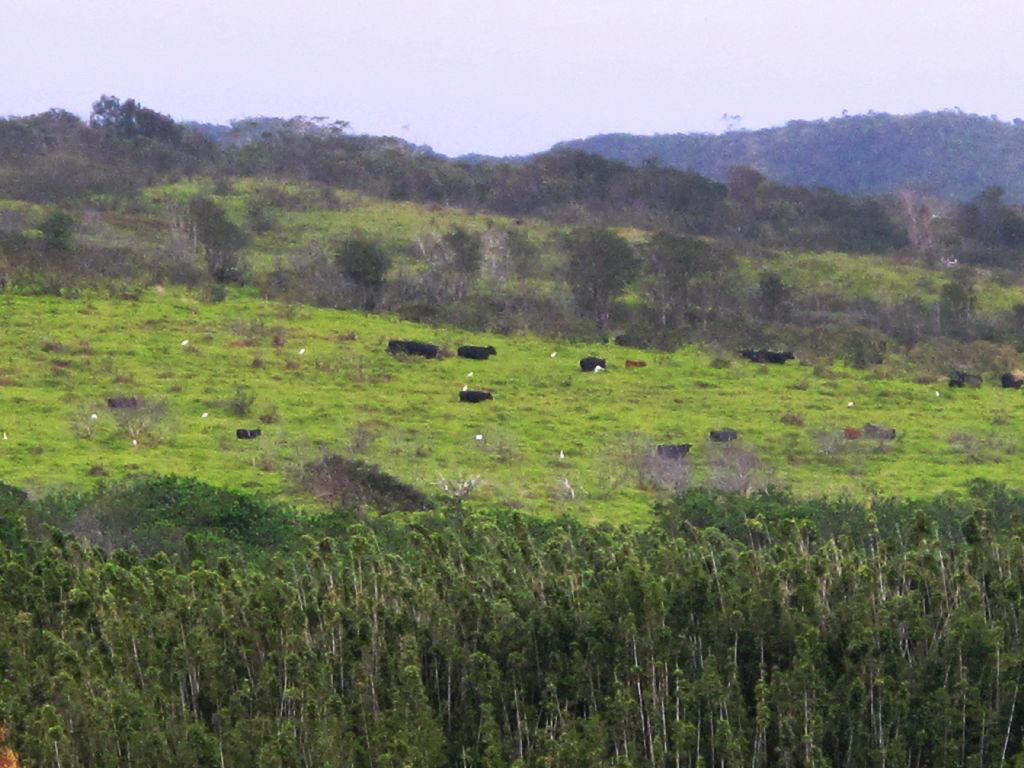
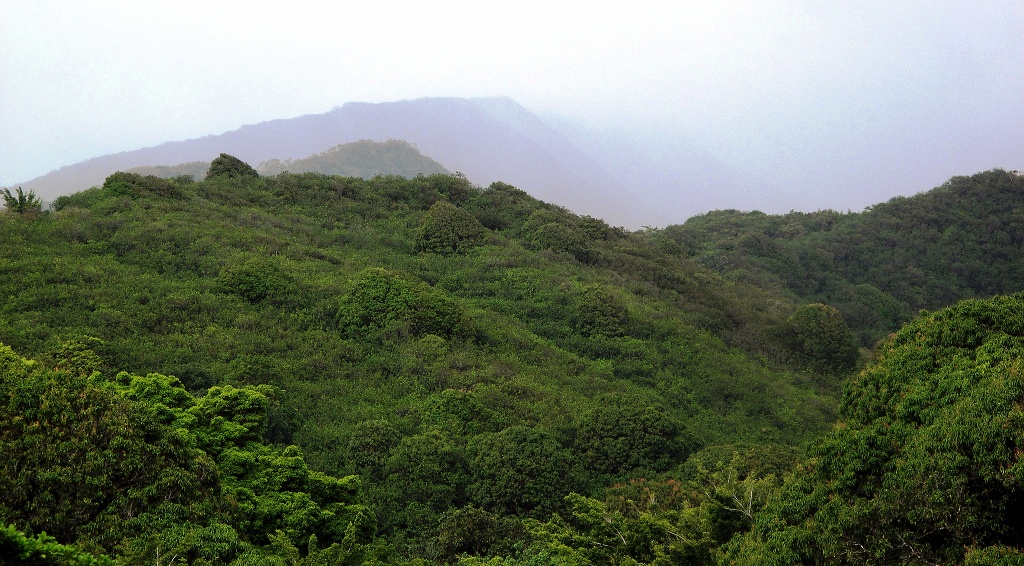
Without being able to swim, however, there wasn't much more I could do at Kipahulu. Which meant it was time to resume my journey around East Maui, and to figure out where I wanted to spend my third and final night on this island.
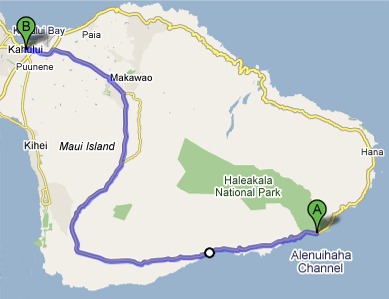
To avoid retracing my steps of the previous day, I continued past the Kipahulu region of Haleakala National Park on what had been Hana Highway, but now became Pi'ilani Highway. This roadway had only recently been reopened after having been involuntarily closed by a 6.7 magnitude earthquake that struck on October 15, 2006 and caused rockfalls, destabilized cliff faces and undermined sections of the road. Even now, many segments of road were unpaved though quite passable.
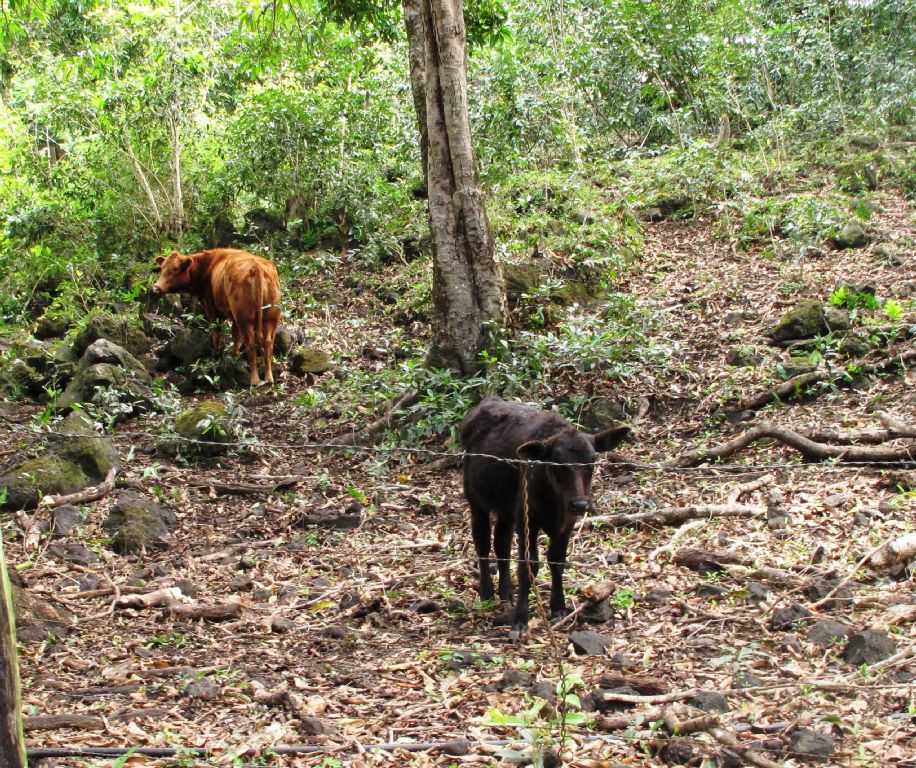
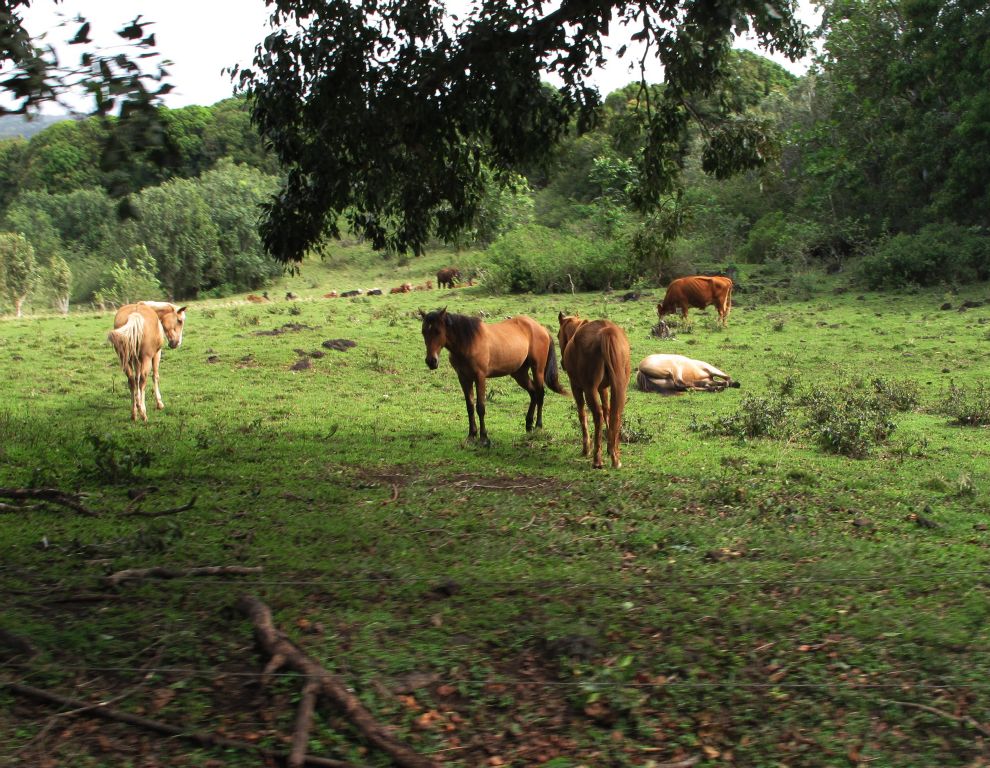
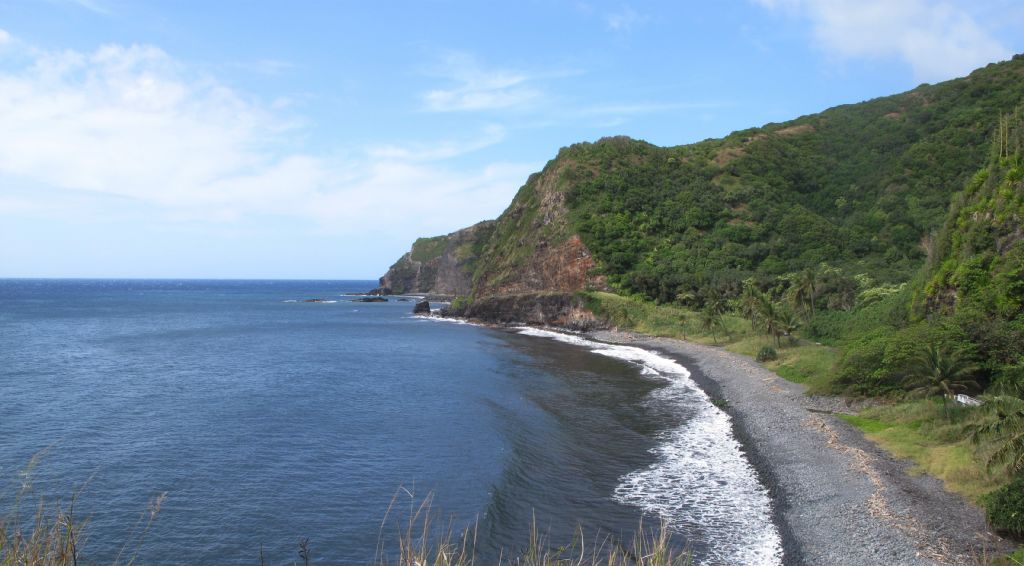

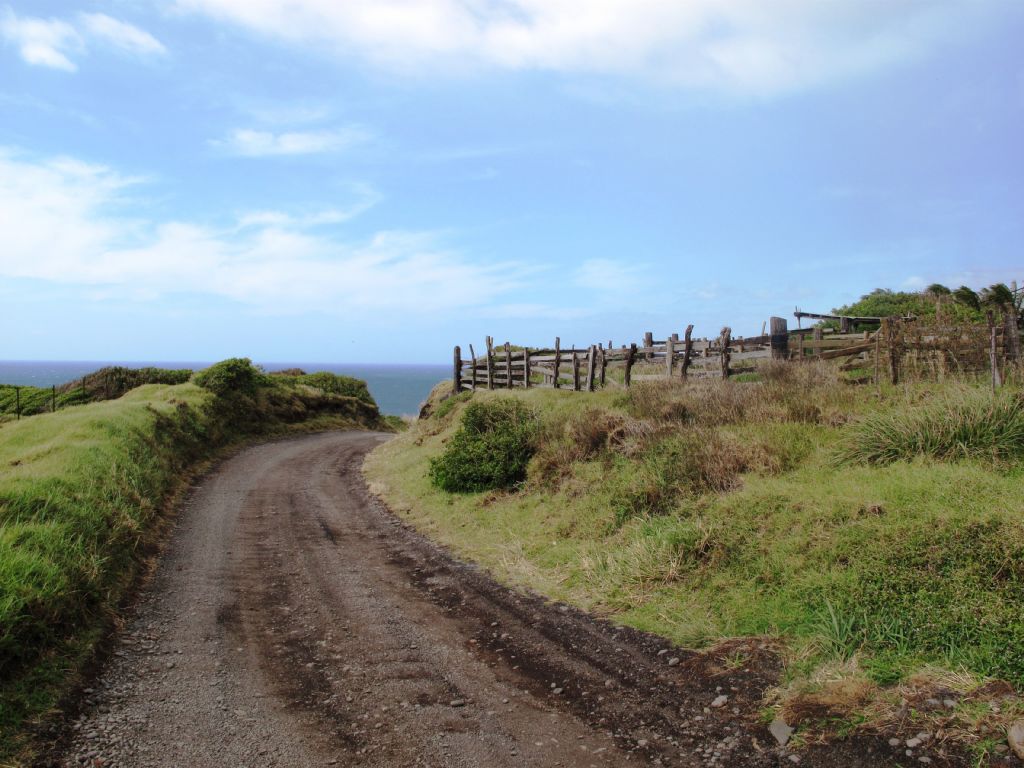
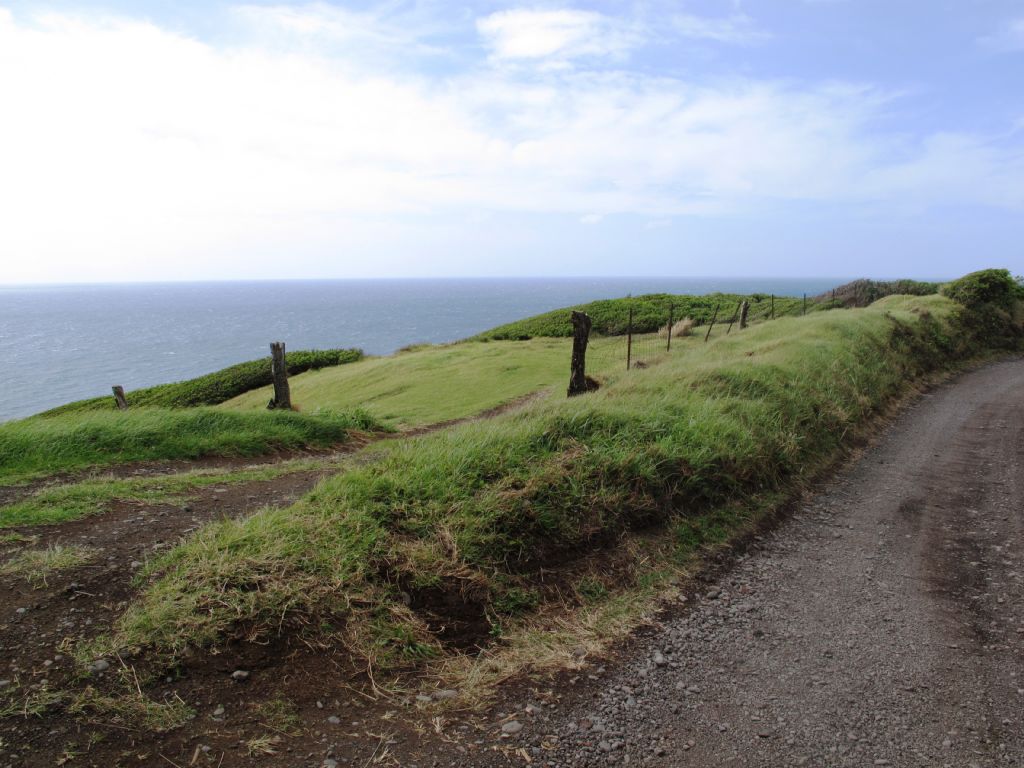
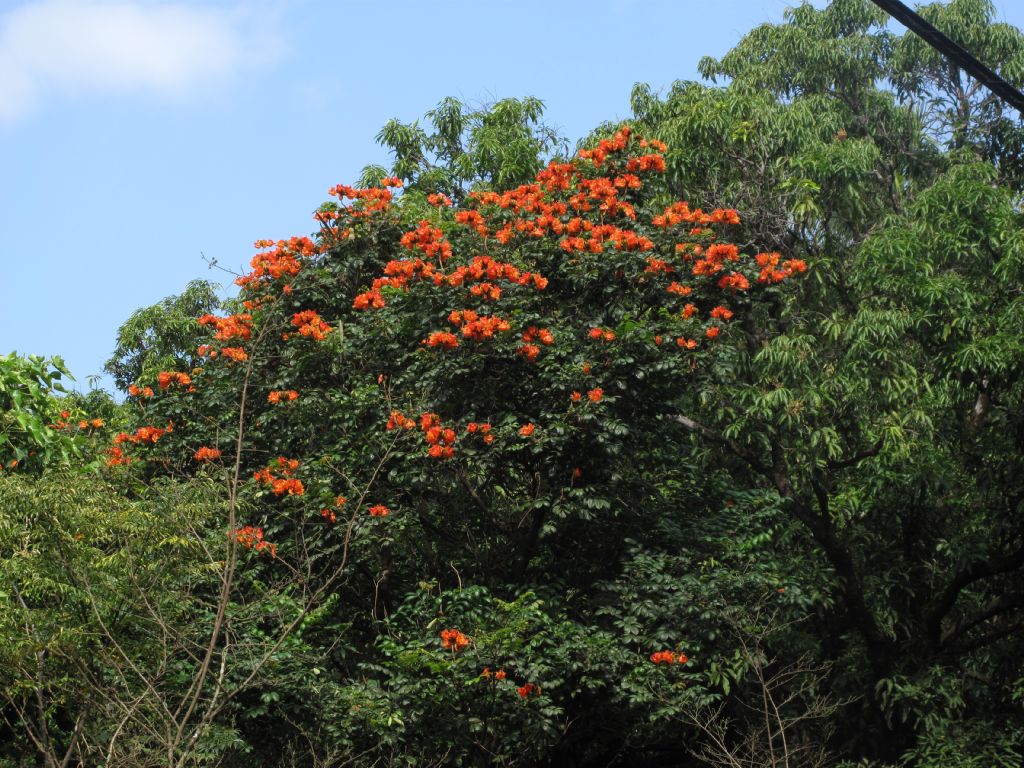
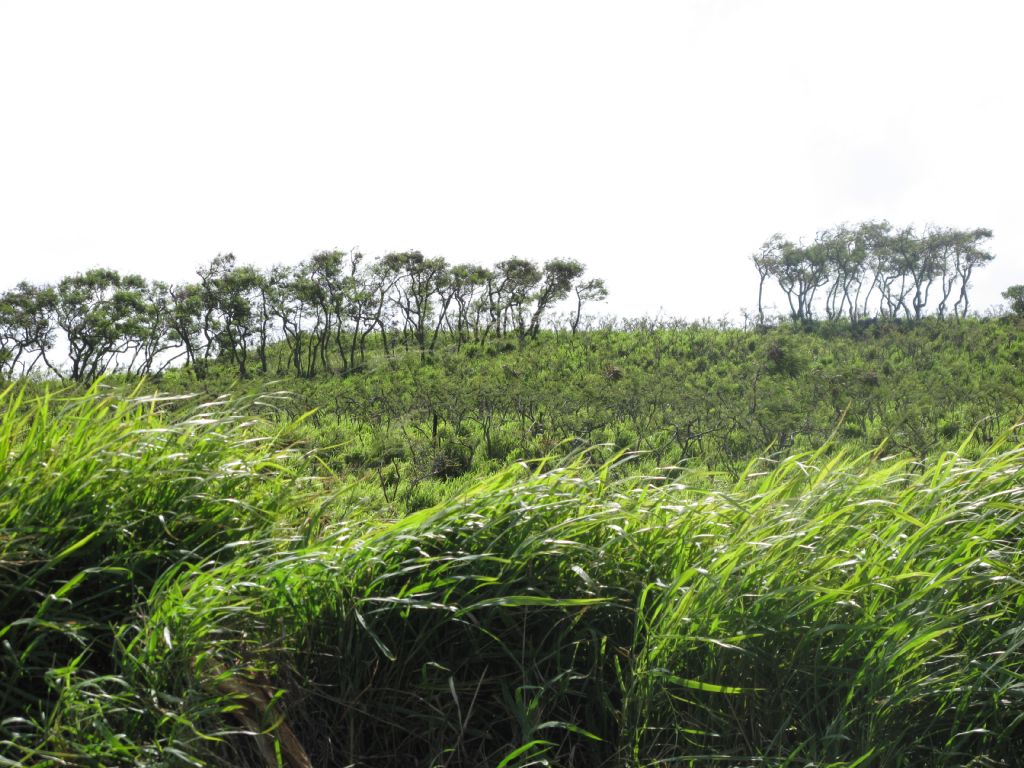
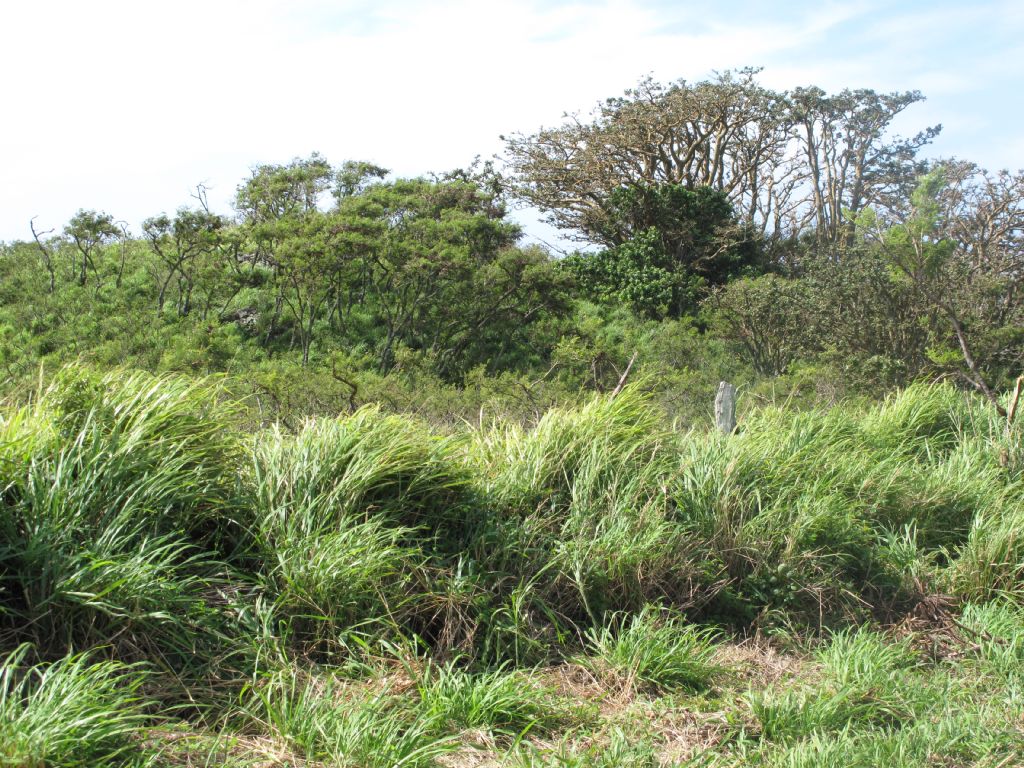

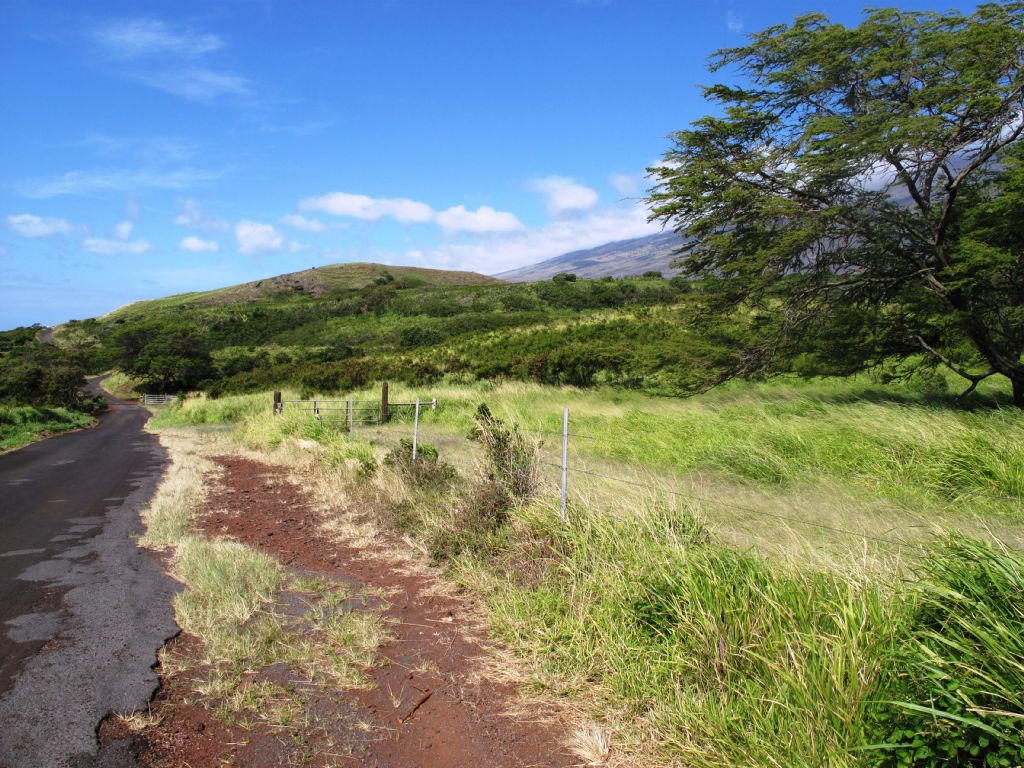
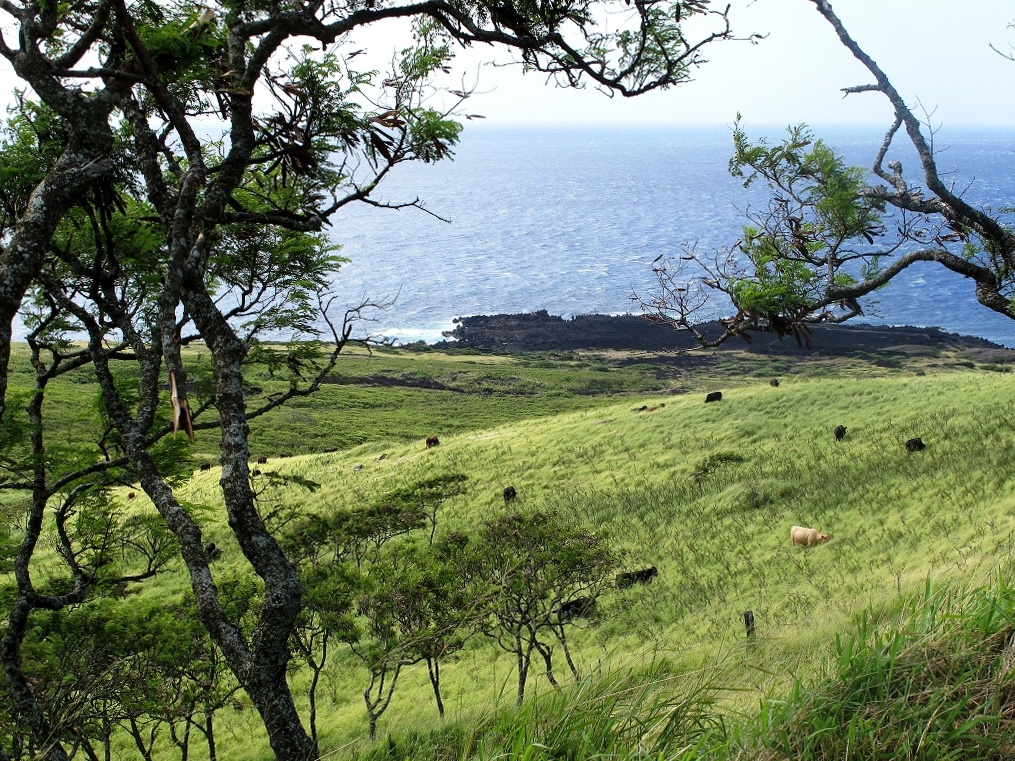
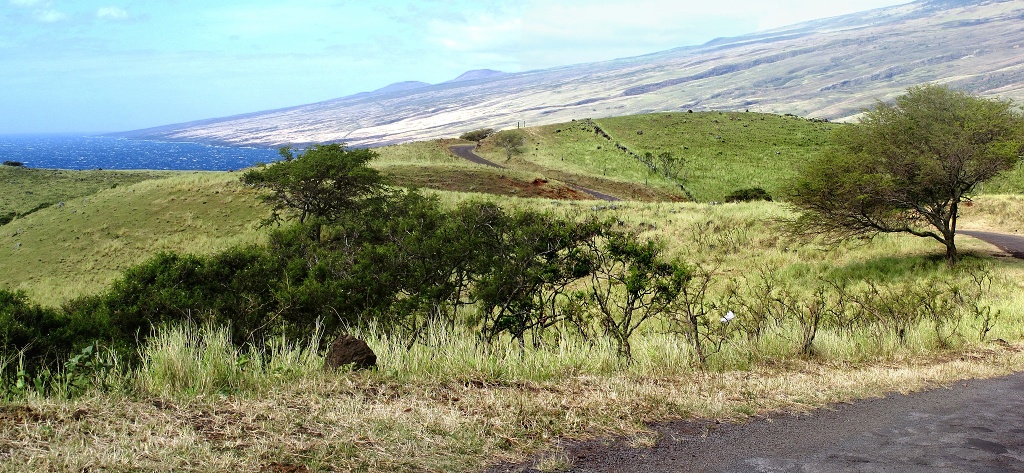
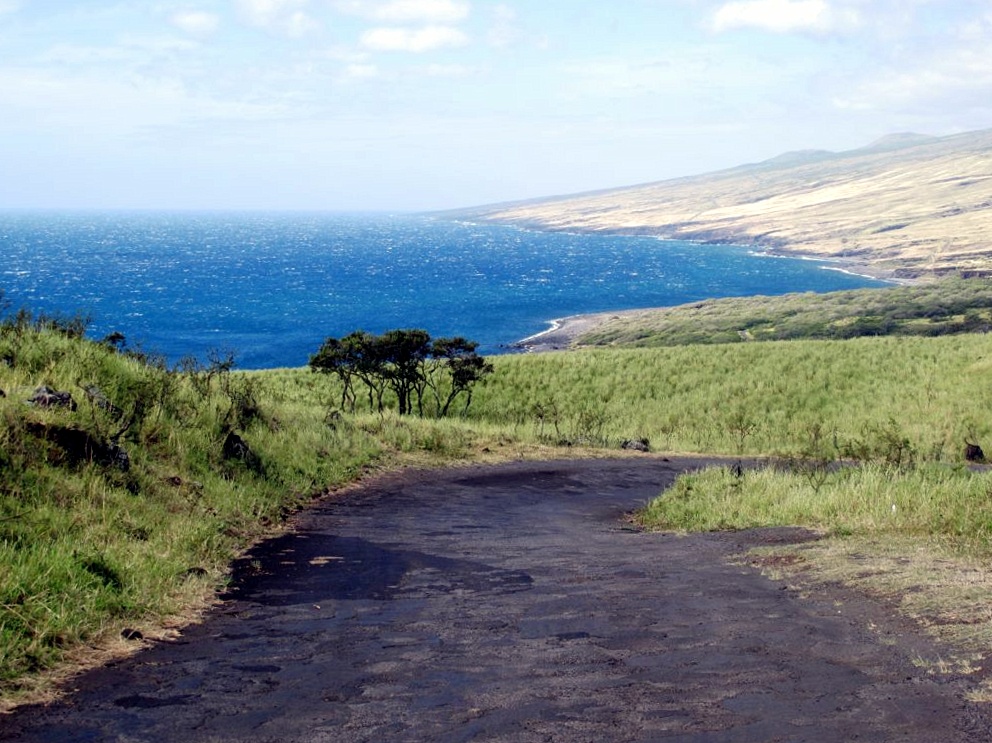
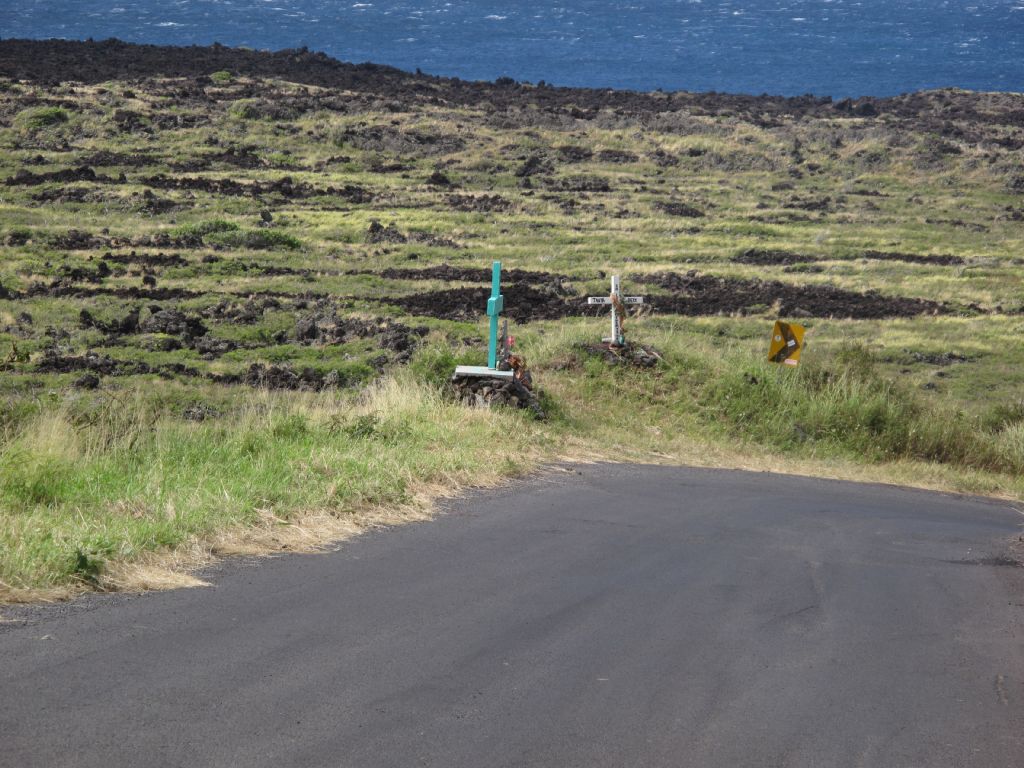
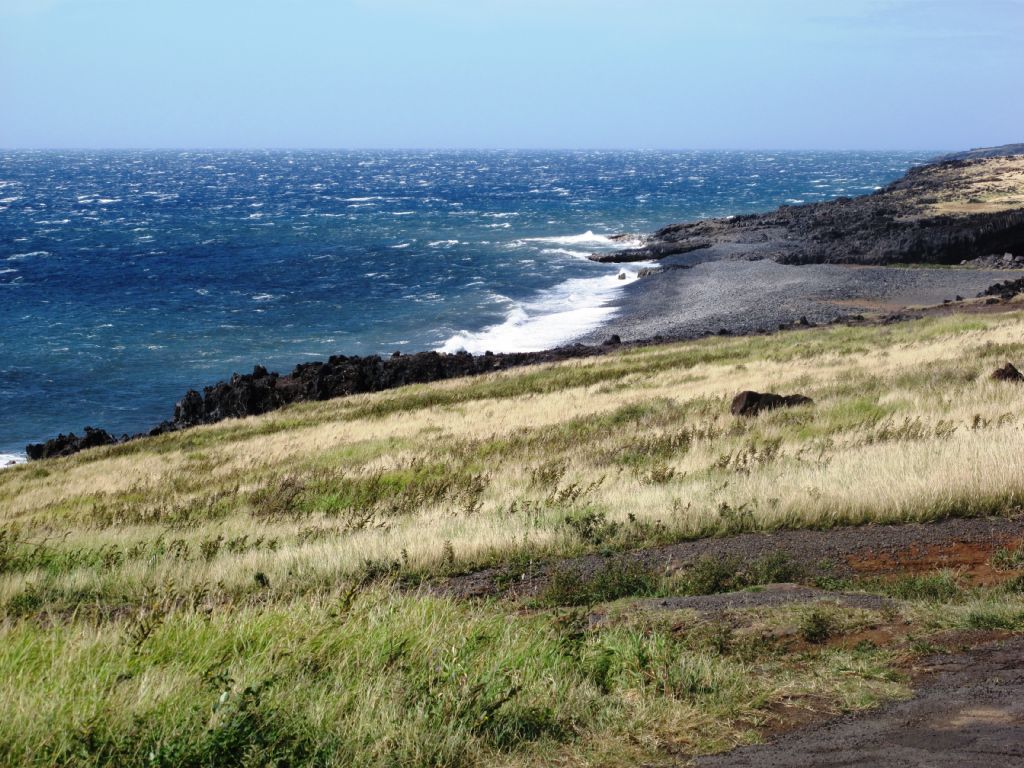
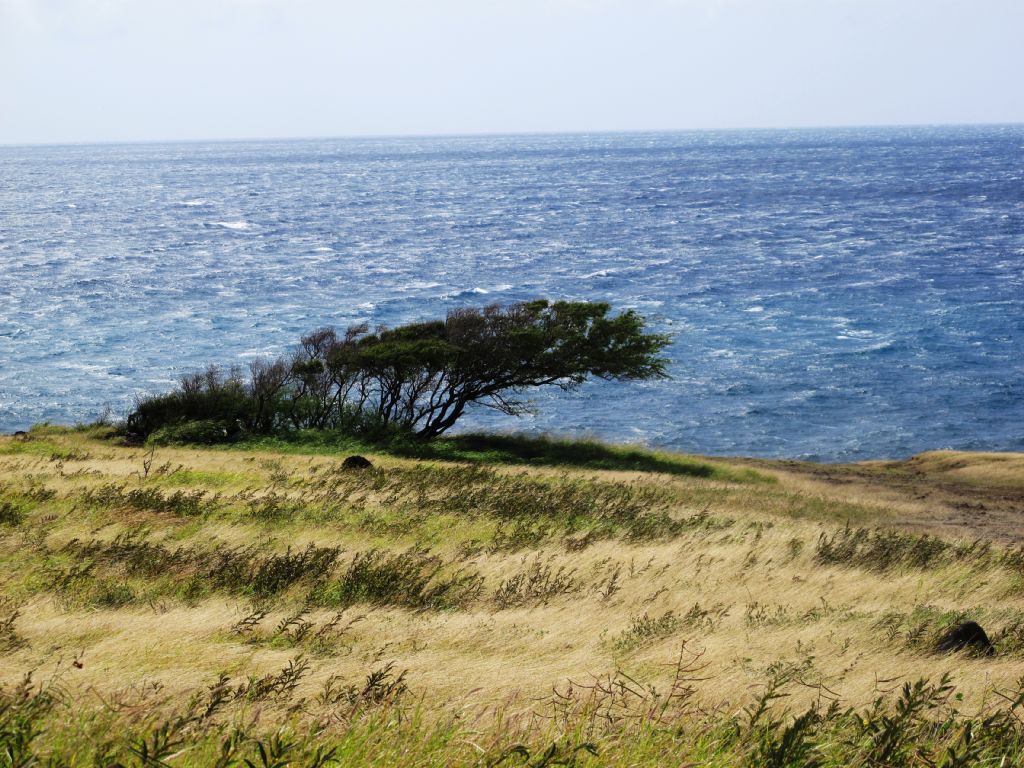
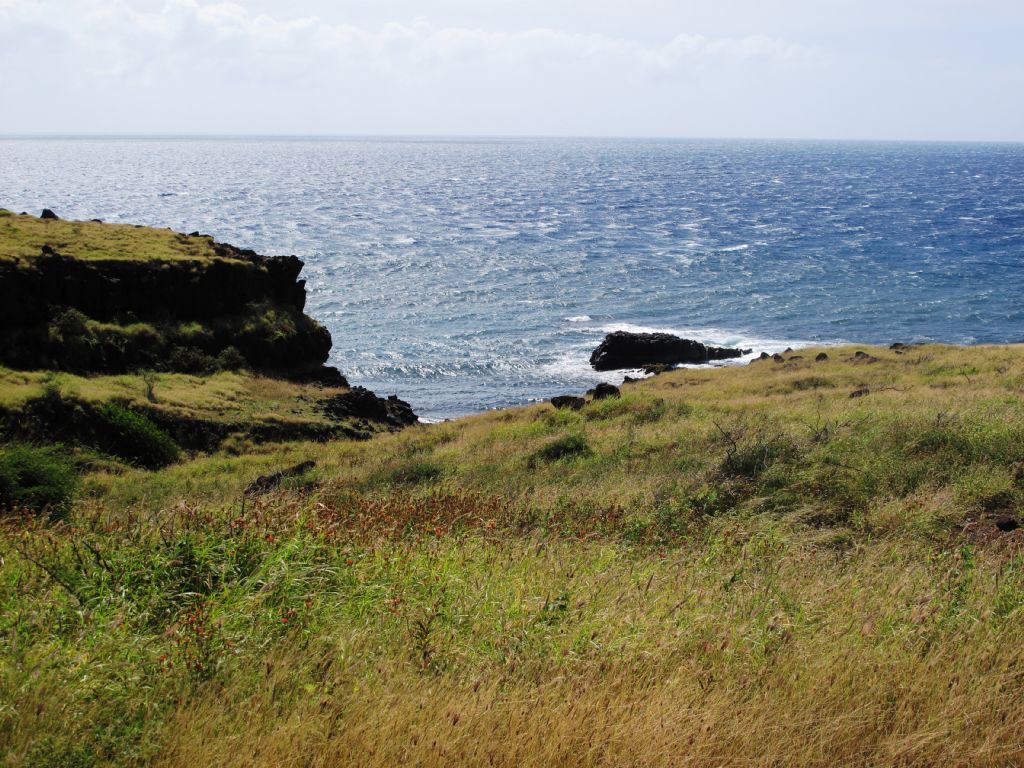
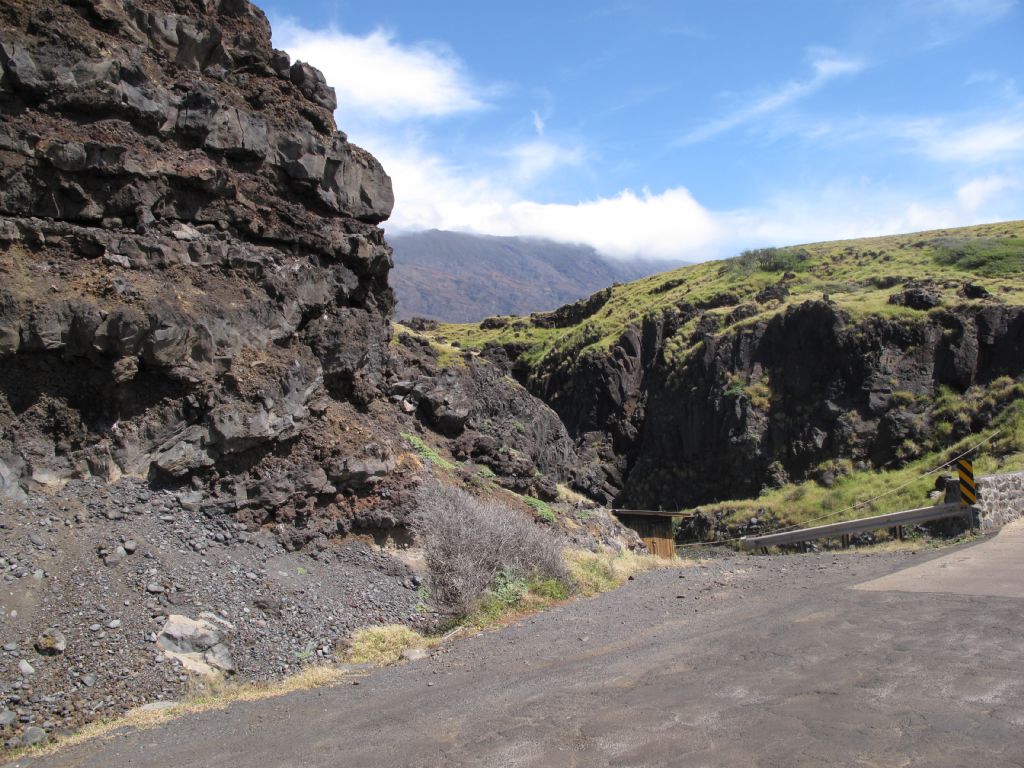
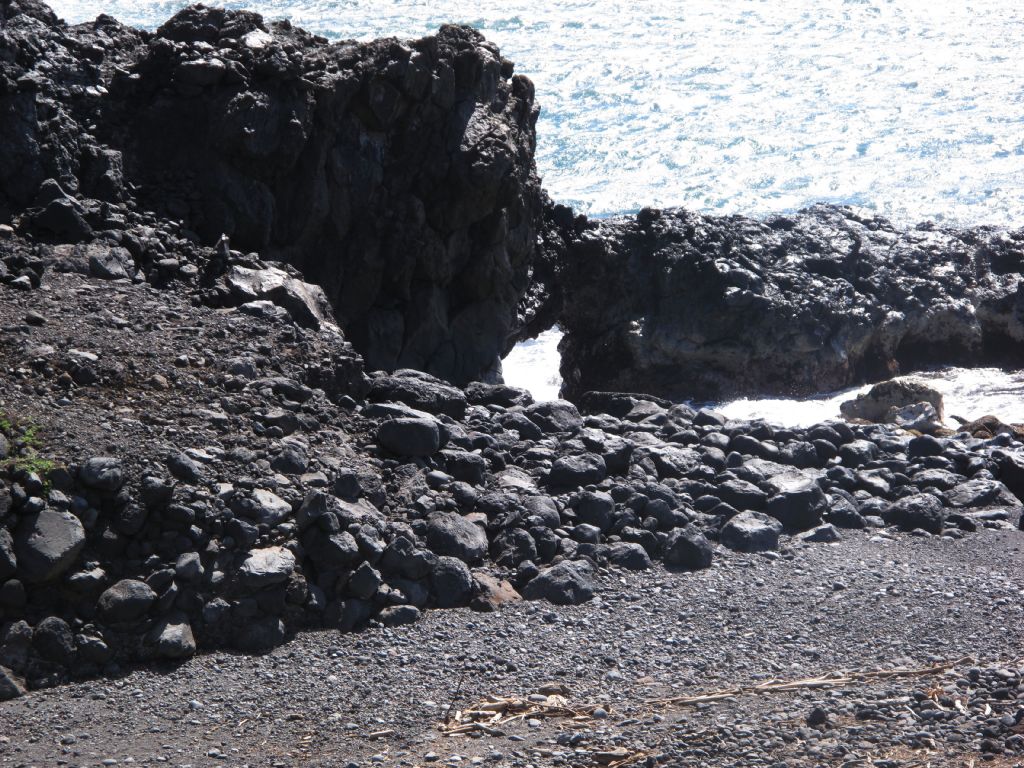
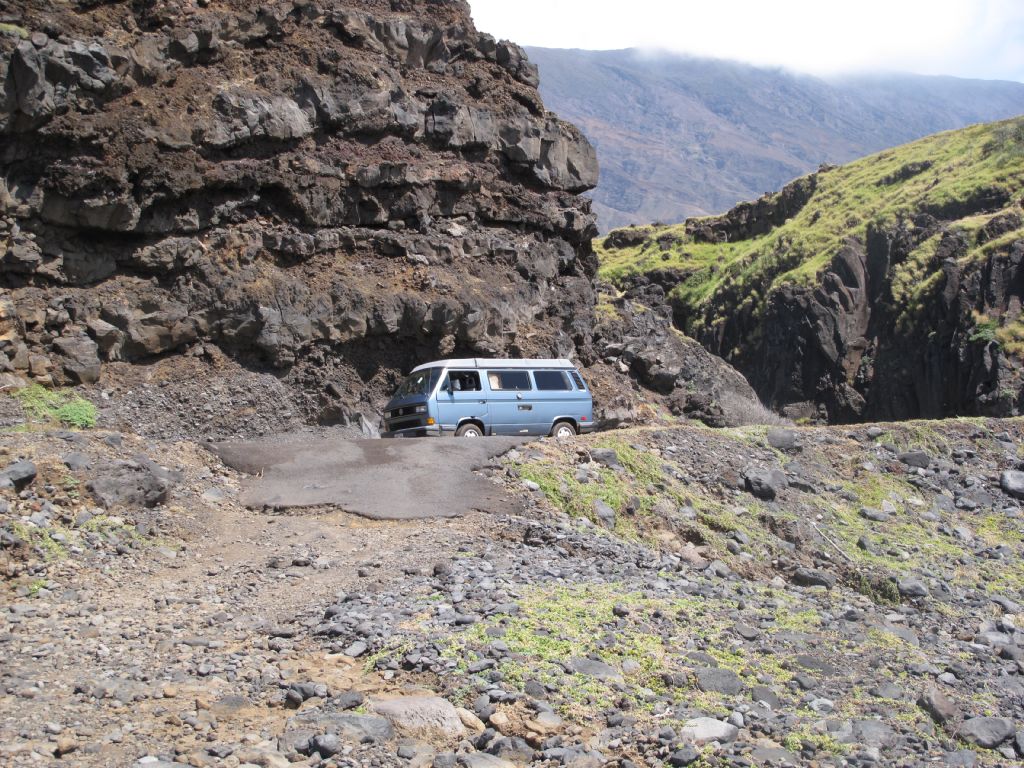
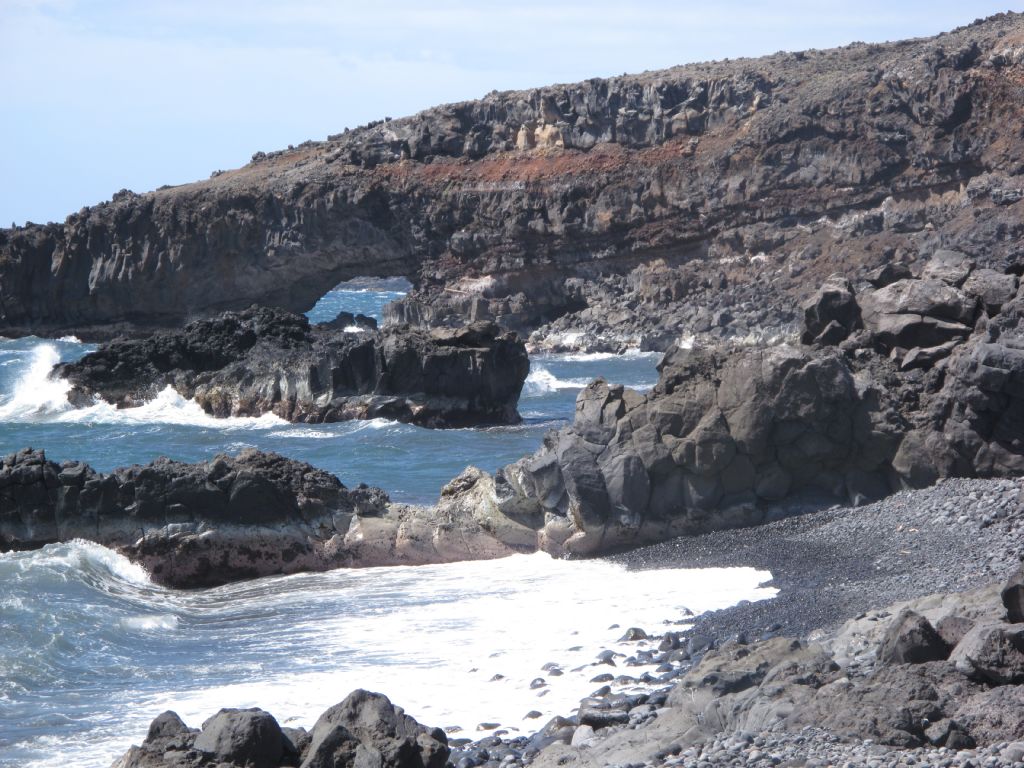
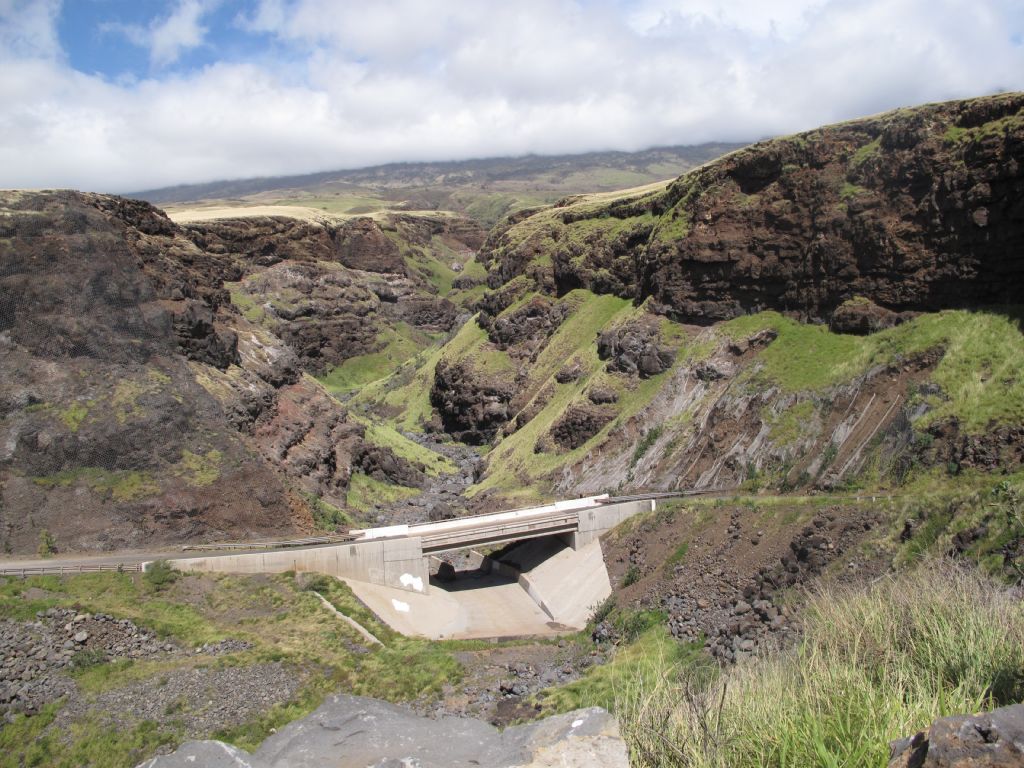
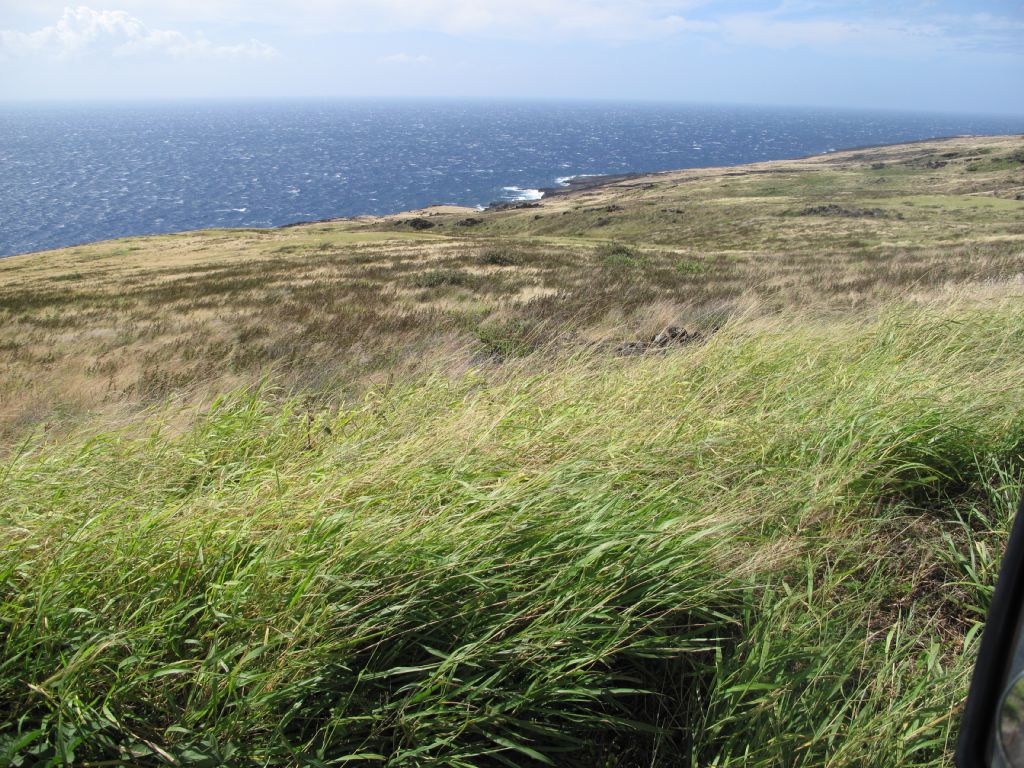
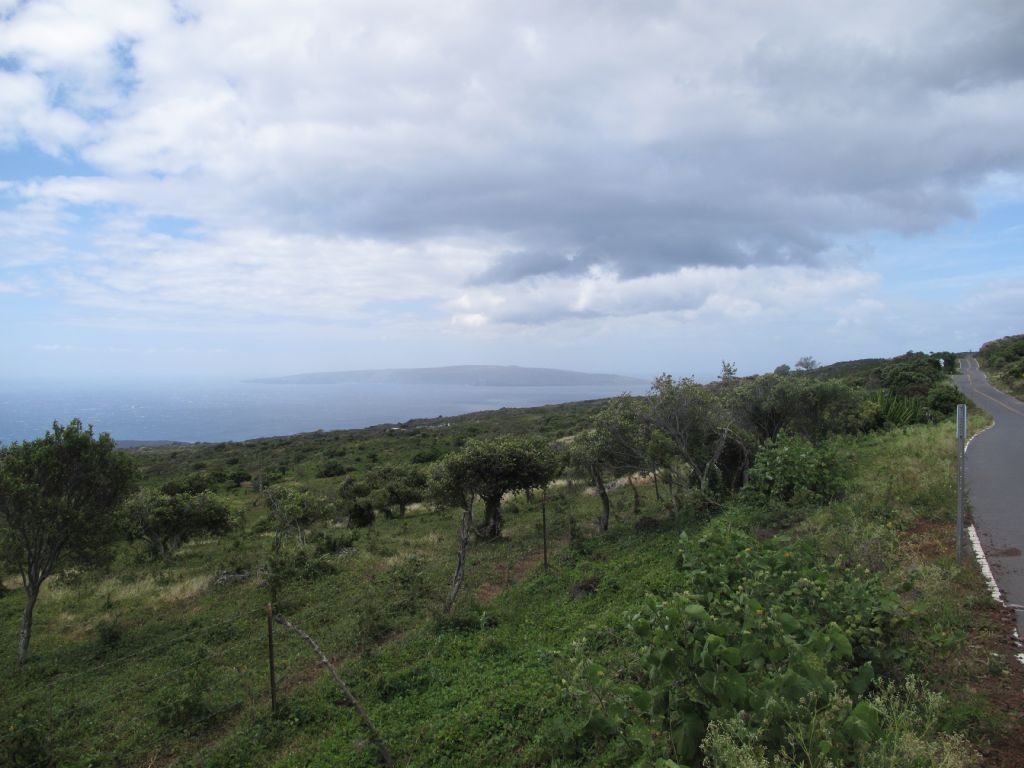
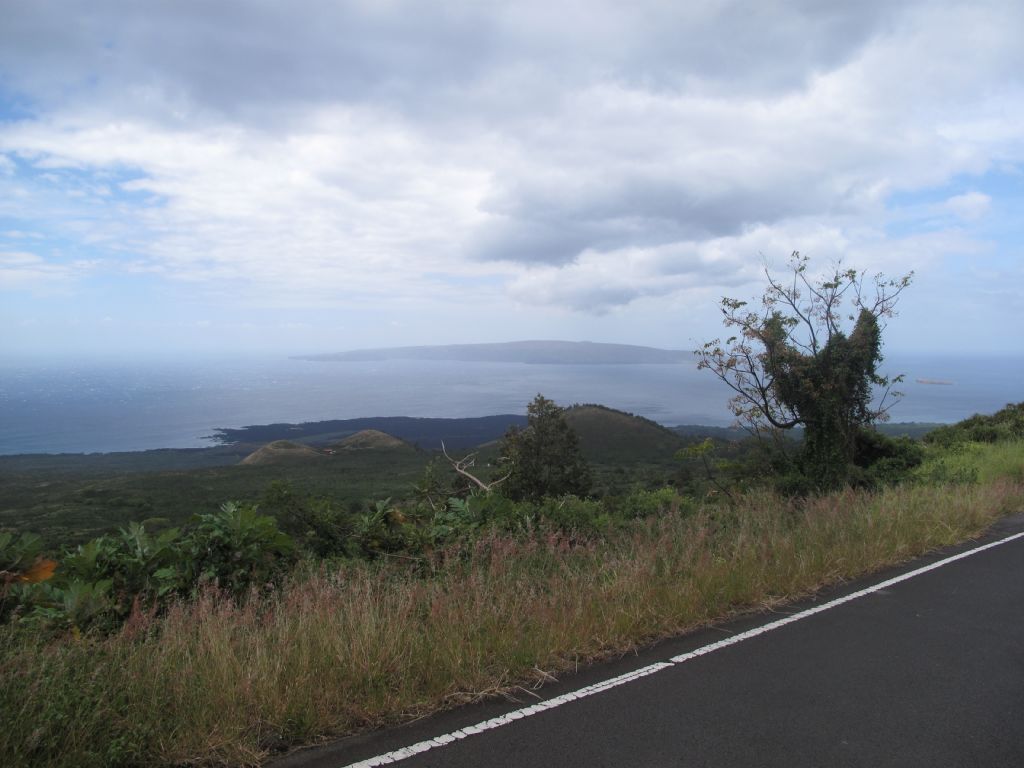
As you can see from the above photos, this section of highway does not cross rainforest. As I drove the landscape became drier and drier, as I retreated farther and farther into the windshadow provided by Haleakala's bulk.
As I rounded a corner, I spotted a truck with its hood up and two men and a woman looking with concern into its innards. I stopped and yelled out the window, "You guys need any help?"
The taller man, whose arms and legs were densely tatooed, smiled and waved dismissively, "No, thanks, we're good."
Immediately the woman stepped in front of him and said, "Wait—do you have any water?"
"I have some," I admitted. "I'm not sure how much." Being from Arizona, I assumed she was thirsty and I only had about two quarts drinking water.
"The radiator's bone dry," she explained. "Any water you have will help!"
I explained that if the need was for non-potable water, I had a sink in the camper and I didn't know how much the tank held, but I had used very little of it. And I had a soda cup for transport. So I filled the cup, and handed it to the woman, who handed it to Tattoo Man, who poured it into the radiator. Then he handed the cup to me, and as I returned to the camper to refill it, the woman said gratefully, "You are a beautiful man!"
After the third time, I replied jokingly, "You already said that. You're going to turn my head!"
"And I will keep saying it," she announced, "each time you bring another cup of water!"
"Please!" I said. "Anyone would do this. It's not a big deal."
"Maybe not," the shorter guy, who also had a few tattoos but whose striking feature was waist-length long black hair, said. "But we've been here an hour and none of the locals going by stopped or asked if we were okay."
It took about six cups to fill the radiator, and then the truck started. But the woman's radiator hose had sprung a leak, and she was afraid her homemade repairs wouldn't last.
"She's a '72," the woman explained. "She's not going to live much longer, I'm afraid. But on an island, you have to make things last as long as possible. And I'll miss her when she goes."
"No worries," I said. "You go ahead of me, I'll be driving slower anyway and probably will stop for more pictures. If you run out of water again, I'll be along presently and we'll do it again!"
In point of fact, I did come upon them again and we did give their radiator a last drink. The woman explained that we would shortly be in cell phone range and then she could call her friend to get them, and to get the truck towed.
Sure enough, after I'd driven another mile or so, my cell phone suddenly began ringing and buzzing with a days' accumulated text messages and voice mail.
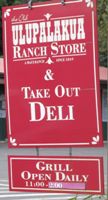
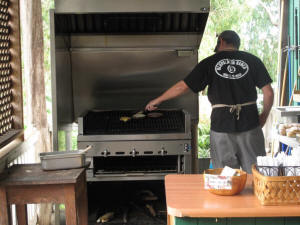
Shortly after I came to a lovely little grill and gift shop. You order inside and then wait on the porch while the cook makes your burger to order. And I mean "to order"; you can not only pick what you want on it, but but what kind of animal died to provide it. Choices included elk and pig, though I never saw elk on the island. I went with the beef; I knew there were cows. And the result was delicious. (I would suggest they add some fries to the menu, though—sweet potatoes are grown on Maui and sweet potato fries are fantastic!)
(Note to my vegetarian friends: They also had garden burgers!)
I should mention at this point that Maui seems surprisingly poorly-mapped, considering that it is a substantial portion of a United States state, and there aren't that many roads anyway. My GPS seemed to think there were more roads here than, in fact, there were. In addition to insisting I make a turn into a field of sugar cane on more than one occasion, it imagined there to be a shortcut just past the Ulupalakua Ranch Store on the slope of Haleakala, to the resort town of Makena. In fact, even Google Maps thinks this road exists. But I've been there, and I can tell you with some authority that, not only is there no such road, but there could never have been such a road, for there is a sheer cliff at the location the road supposedly turns off of the highway.
I had decided to spend the night at Makena Beach. Of course, to get to Makena, I had to go first to Kahului. By the time I reached Makena, which is not only a resort town but the mother of all resort towns, I found it to consist almost entirely of condos, upscale vacation "properties", and expensive stores. There are also a number of beaches, all of which seemed to belong to the State Park system and to not allow overnight parking or camping. There was one section that allowed overnight fishing but I didn't have a rod or reel and was told they actually check.
By now it was dark, and I didn't know where I was going to stay. I could go back to Hosmer Grove in Haleakala National Park; my receipt still was good for another day. But 1) I didn't want to have to rush back in the morning to be there to turn in the camper by the appointed time of 10 PM; and 2) I didn't want to freeze my butt off up there again. Besides, it would take me another couple of hours to get there.
I drove back to the camper facility, thinking I might could park there. And I could, as it turned out. But I didn't want to. Surely there was a nearby beach! Kihei is on the beach. The ancient camp book that came with the camper told of one Papalaua Beach that allowed camping, fairly nearby. The GPS had never heard of it but I resolved to find it on my own. I drove along Highway 30, unable to see a thing off the road but hoping Papalaua Beach might have a sign.
Finally, I did spot a beach parking access parking area, or rather, I spotted the tent and bonfire a family had erected there. There was space for me, so I parked the camper and checked the place out. I was literally 30 feet from the Pacific Ocean, or rather peaceful Maalaea Bay, in front of an ancient and graceful tree. I knew it would look like a postcard in the morning; yet I was no more than 15 minutes away from Aloha Campers. It was perfect sleeping temperature; the other campers were quiet or drowned out by the ocean breeze; and the stars shown brilliantly above.
It was a couple of hours later than I'd hoped, but I'd found the perfect place to spend my last night on Maui.





